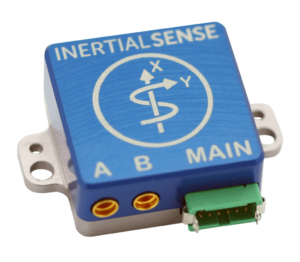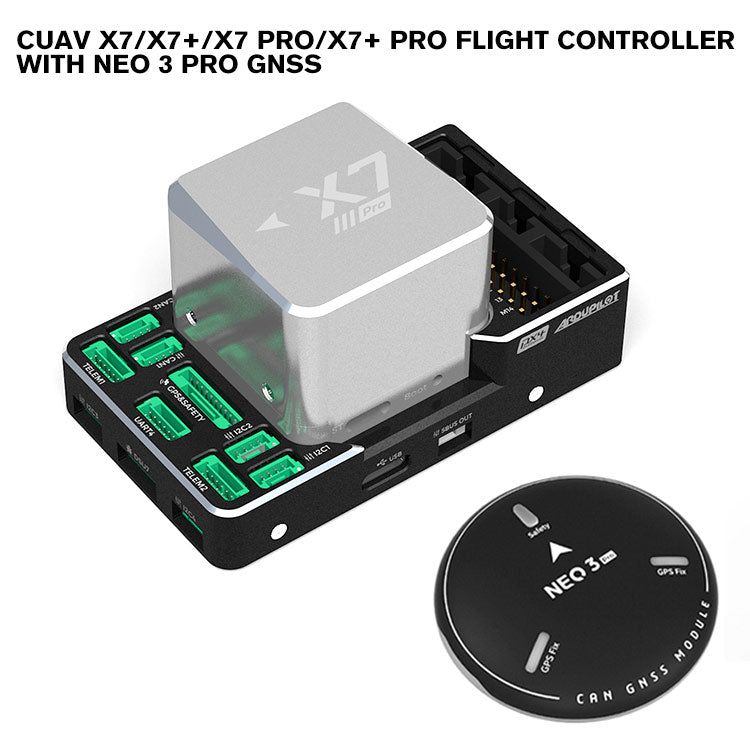Trustworthy Drone Navigating with SparkNavi Drone Flight Controller and GNSS/INS Made in Taiwan
Trustworthy Drone Navigating with SparkNavi Drone Flight Controller and GNSS/INS Made in Taiwan
Blog Article
Recognizing the Essential Functions and Features of a Drone Trip Controller for Optimal Aerial Efficiency
The flight controller works as the essential element in a drone's style, coordinating its activities and guaranteeing security with a sophisticated interplay of sensing units and data processing. Understanding the important features and features of these controllers is crucial for making the most of aerial performance, as they dictate not only navigational accuracy but additionally overall safety and reliability. With advancements in technology, the landscape of trip controllers is rapidly evolving, prompting a closer examination of what truly specifies optimum performance in this important system. What effects do these growths hold for both lovers and experts in the area?
Overview of Trip Controllers
When checking out the globe of drone technology, recognizing flight controllers is important for both hobbyists and professionals alike. Flight controllers work as the brain of the drone, managing its movements and ensuring security throughout trip (SparkNavi drone flight controller and GNSS/INS made in taiwan). They process information from various sensors, consisting of gyroscopes, accelerometers, and barometers, to keep equilibrium and respond to pilot inputs effectively
The design of trip controllers can vary dramatically, varying from fundamental variations developed for entry-level drones to innovative systems equipped with innovative features for expert applications. The assimilation of GPS abilities enables exact navigation and positioning, while programmable firmware permits individuals to customize trip qualities to match their certain needs.
In addition, flight controllers are crucial in helping with interaction between the drone and the remote control, making it possible for real-time adjustments and telemetry information transmission. Understanding the various types of trip controllers, consisting of multi-rotor, fixed-wing, and hybrid systems, is crucial for choosing the appropriate design for an offered application. Ultimately, a comprehensive grasp of flight controllers not only improves the flying experience yet additionally takes full advantage of the performance and safety and security of drone operations.
Secret Features of Flight Controllers
Trip controllers play a crucial role in taking care of a drone's trip characteristics by executing several key functions that make sure security and responsiveness. One of the primary features is the stablizing of the drone's orientation and elevation. This is attained via the assimilation of numerous sensing units, consisting of gyroscopes, barometers, and accelerometers, which continually monitor the drone's placement and activity.
.png)
An additional crucial function is the handling of control inputs from the pilot or independent systems. The flight controller translates these inputs and adjusts the drone's motor rates as necessary to accomplish the preferred flight course. This consists of managing pitch, roll, and yaw, which are critical for ability to move.
In addition, flight controllers are equipped with fail-safe devices. These features are made to react to essential situations, such as reduced battery degrees or loss of signal, by launching predefined activities like returning to the launch point or floating in location.

Necessary Functions to Consider
When selecting a drone flight controller to ensure optimal efficiency and reliability,Countless essential features need to be taken right into account. One critical facet is the controller's handling power, which establishes its capacity to manage complex flight formulas and real-time information processing. A higher handling ability enhances responsiveness and security throughout flight.
One more important attribute is the number of sustained trip settings. A flexible flight controller need to supply different modes, including acro, elevation hold, and GPS-assisted settings, accommodating various pilot ability degrees and operational scenarios. Additionally, the visibility Full Article of built-in safety and security features, such as fail-safes and geofencing, can considerably enhance functional safety.
Compatibility with various communication procedures is likewise vital, as it makes sure smooth assimilation with various other devices and peripherals, such as remote controllers and telemetry systems. In addition, the controller's firmware need to be straightforward and frequently updated to incorporate brand-new features and optimizations.
Assimilation With Sensors and Equipments
A flight controller's efficiency is heavily affected by its ability to integrate with different sensors and systems. This combination is vital as it enables the trip controller to obtain real-time data essential for effective trip management. Trick sensing units consist of GPS, inertial measurement systems (IMUs), measures, and magnetometers, each offering crucial information relating to the drone's elevation, position, and positioning.

Furthermore, progressed flight controllers sustain assimilation with payload systems, consisting of video cameras and various other sensors, making it possible for improved capabilities such as independent navigation and challenge evasion. This interconnectedness not just improves the drone's operational abilities yet also expands its application possible throughout various industries, from aerial photography to agricultural tracking. Hence, a well-integrated trip controller is fundamental for achieving optimal aerial performance and making sure the integrity of drone procedures.
Tips for Optimizing Efficiency
To make the most of the efficiency of your drone, numerous crucial approaches can be utilized that emphasis on enhancing both equipment and software application parts. Guarantee that the trip controller firmware is up to date.
Following, calibrate your sensors, including the accelerometer and gyroscope, to make certain exact analyses. Appropriate calibration reduces drift and enhances flight stability, especially during complex maneuvers. In addition, take into consideration updating the equipment parts, such as motors and props, to enhance thrust and performance. High-grade props can reduce drag and rise flight time.
Tweak your trip settings, including PID (Symmetrical, Indispensable, Derivative) values, to attain smooth and responsive handling. By implementing these approaches, drone operators can considerably boost aerial performance, leading to a much more delightful and efficient flying experience.
Verdict
In verdict, an extensive understanding of drone trip controllers is vital for enhancing airborne performance. The assimilation of crucial attributes and vital functions, including processing power and security systems, straight affects the stability and maneuverability of drones. Effective interaction with numerous sensing units and systems plays a vital function in accomplishing exact navigating and operational effectiveness. By prioritizing these aspects, drivers can substantially boost the performance and dependability of their drone systems in diverse applications.
Flight controllers offer as the mind of the drone, coordinating its movements and guaranteeing stability throughout flight.Flight controllers play a crucial role in managing a drone's trip Find Out More dynamics by executing numerous vital functions that ensure stability and responsiveness. The flight controller interprets these inputs and adjusts the drone's motor rates as necessary to attain the preferred trip path.Numerous necessary attributes should be taken into account when selecting a drone trip controller to make sure optimum efficiency and dependability. Hence, a well-integrated flight controller is basic for achieving optimal aerial efficiency and ensuring the integrity of drone operations.
Report this page